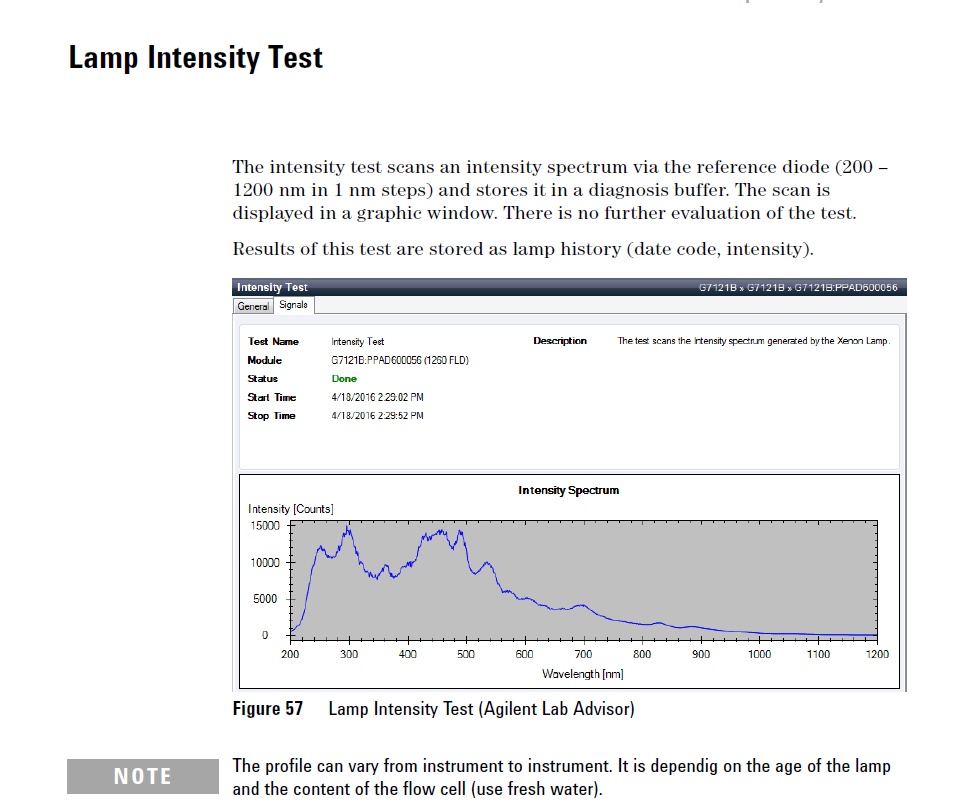Hello,
I am running lab advisor tests on a few FLD (G1321B) cells I have. I've ran an Intensity Test on a brand new one with water flowing through it 0.25ml/min.
In the Agilent manual, my spectrum looks quite different to theirs and my intensity counts are much lower. The spectrum looks the same as a few older used ones I have too.
What might be the reason for this? And does this mean my new flow cell is not as good as it should be?

My intensity spectrum from the new flow cell.

Agilent's example.
